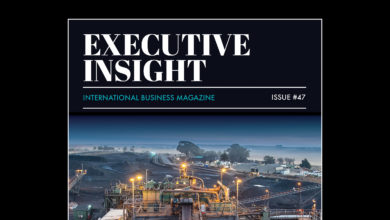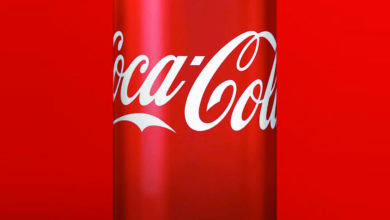Blessed as it is with a rich abundance of seemingly every key resource that global markets crave, from minerals and metals such as iron ore, gold, uranium, and rare earth metals, to name but a few, to timber and agricultural exports, it is perhaps understandable that Australia is overshadowed, to some extent, as a potent oil and gas producing nation.
By measure of oil and natural gas reserves alone, Australia does not sit at the top table alongside more well-known countries, such as the US, Russia, and Saudi Arabia, but certainly it is there or thereabouts as an upper-middle tier producer. But of course, assessing a country’s hydrocarbon credentials by measure of supply alone is a black and white way of painting a picture. Size is not everything; more does not always equal better.
As the catastrophic fall from grace of Venezuela and its once booming oil and gas sector in recent years has shown us, petroleum riches are no guarantee of wealth without the efficiencies and innovation that come as a by-product of effective private sector management. Australia, as one of the world’s leading pound-for-pound, mixed-market advanced economies, has a thriving oil and natural gas sector that in many respects punches above its weight. Over the past decade, the sector has contributed more than AU$300billion to the coffers of the national economy – a figure which could increase markedly over the decade to come, following Australia’s entry into the lucrative LNG market.
Santos, Australia’s second-largest independent oil and gas producer, has itself contributed vastly to the regions in which it operates, generating wealth and helping to create jobs at both a regional and local level, and social benefits within the communities that host it. As a proudly Australian company, this is something that Geoff Bird, Santos’ Supply Chain General Manager is particularly proud of, stating: “We really pride ourselves on our interaction with communities, we’re committed to the people and places in which we operate.
We want to make meaningful, long term contributions that make a real difference to our host communities and, in partnership with them, we want our activities to generate positive economic and social benefits. So yes, we definitely work closely with local businesses to identify and provide them with opportunities, and that includes targeted Indigenous employment and training, and pursuing opportunities to support local Indigenous business participation. This is certainly a focus area for the Supply Chain group.
Oil and Gas is an international business so there will always be a need to source some materials and services from international suppliers. However, those international suppliers who are successful in Australia have set-up regional offices employing local staff.”
From the get-go, when the company was established in 1954, Santos quickly acquired a pioneering reputation for resourcefulness and innovation. These attributes helped sustain the company over the space of a decade until it made its first major discovery of natural gas in the Cooper Basin with the Gidgealpa 2 well in 1963, and the Moomba 1 discovery later in 1966 – breakthroughs that both confirmed the region as a major petroleum province, and Santos as a leading Australian industry player in the making. More than six decades on, during which it has grown from being a plucky local startup into one of the Asia-Pacific’s leading industry operators, the Santos brand remains one which is synonymous with innovation and operational excellence. The company feels strongly that its historic pioneering values remain integral to its modern-day success, but equally the company has consistently maintained its standing as a leading independent producer through its ability to stay ahead of the curve, technologically speaking.
“The biggest difference in procurement between 10 years ago and now is that technology has really moved along. People are used to buying things on consumer websites such as Amazon and eBay. So it’s shocking when business to business procurement systems are a decade out of date.
A key pillar of our Supply Chain strategy is to provide tools and systems which are simple, easy to use and intuitive, with examples being the implementation of a new eProcurement Platform at Santos, and our use of virtual robots for performing routine repetitive tasks. However, we are only scratching the surface of what we can automate with robotics or streamline with modern cloud-based procurement systems.
One of the biggest changes in Procurement over the past 10 years is how we now think about our ERP system (SAP/Oracle). The trend now is for ERP systems to sit in the background as a database repository and then we use applications, some of which we can develop and customise ourselves, to perform tasks and get data in and out of the ERP system e.g. Catalogue inventory search.”
Sixty years is a long time in business, and naturally the Santos of today is a different animal to that of its forbear. Where once Santos’ core business almost exclusively centred around oil and gas discoveries in central Australia, today, the company is a far more multi-faceted outfit. Having made a number of large discoveries, mainly spanning the hydrocarbon-rich North Western and Eastern territories of Australia, Santos now acts also as a supplier and distributor of sales gas to all mainland Australian states and territories, ethane to Sydney, and oil and liquids to a domestic and Pan-Asian customer base. Taking into account the country’s huge size, procurement and logistical efficiencies and excellence are paramount so as to ensure that products and services reach customers in the right place, at the right time.
“The Santos Procurement Function is organised along category purchasing lines with category procurement plans in place for all major goods and services we buy. Our category leaders know their market, the main suppliers and who we are likely to source from in the future – that’s their job,” explained Geoff, who continued: “On the supplier side it requires good old-fashioned business development. Meeting with people in the Santos business to explain the services/goods they offer. I’m not a big fan of prequalification systems, which I don’t think really work. Although I do see a role for registration systems to highlight smaller, local and indigenous suppliers which are sometimes hard to identify.”
In his view, the foremost objective of a Supply Chain Function is to deliver value to the business, otherwise Supply Chain is, in his words, just an overhead: I don’t think quality and reducing cost are at odds with each other, not if you are focused on long term, sustainable cost reduction and your sourcing is aligned with this approach. I do however agree that when contractor selection is made, the less tangible ‘quality’ creates some debate verses the very tangible purchase cost. We are very clear in our processes that we want lowest overall total cost which includes less tangible factors.”
In order to deliver value, the Supply Chain Function must be good at managing internal stakeholder relationships, relationships that are built on collaboration, trust, and mutual respect. As with any internal relationship, it can be difficult to get the balance right – the Function cannot be subservient to its customers, but neither can the tail wag the dog. Getting the right balance is not always easy, but when done well is fundamental to creating a modern Supply Chain Function that can significantly contribute to real bottom line value.
In light of past disasters, the oil and gas sector is now one which places great emphasis on protecting the safety of the environment, local communities, and employees. Whilst care is taken to ensure that they are neither cumbersome nor restrictive, qualification and consultation processes are conducted before suppliers are engaged, who are expected to comply with a Santos Code of Conduct, which incorporates our environment, health and safety policy and standards of business conduct. In this regard, there is no sitting on the fence – on environmental and safety matters, there is a “go”/”no go” line in the sand for all Santos partners and suppliers, in that if they do not satisfy rigorous minimum safety or environmental standards, doing business is simply out of the question. “We simply don’t work with them,” Geoff said, forthrightly.
“Regular supplier performance meetings are held with our contracted service providers. Based on an assessment of risk and contractor performance, the meetings are held monthly, quarterly or six-monthly. The standard agenda includes a review of environmental, health and safety performance, activity levels and forecasting, quality planning and review, and reliability.”
In terms of what the future holds, Geoff is optimistic about the coming year. He concluded by telling us: “We’ve had a number of wins in 2018 such as the re-outsourcing of accommodation camps and travel management, the self-perform approach to onshore coal seam gas project execution, delivering over AU$50M of bookable savings. A few wins like these then gives the Function a licence to challenge other areas of the business where costs can be reduced, using a strategic sourcing approach.”



